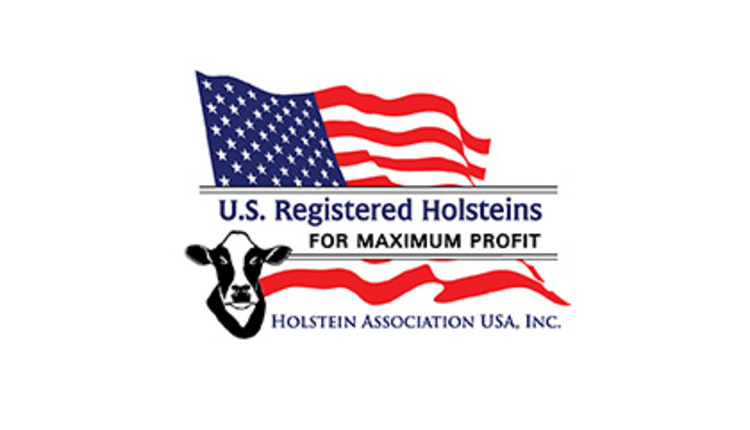
For many dairy farm families, the last four years have brought tough times. Historically low milk prices and bottle-necked margins have forced many dairies across the country to shutter their barn doors.
As the bar for keeping a farm out of financial stress nudges higher and higher, experts like Dr. Joseph Bender, Assistant Professor of Clinical Dairy Production at the School of Veterinary Medicine at the University of Pennsylvania School (Penn Vet), seek innovative solutions to not only stabilize the viability of the family dairy, but help it to flourish. Through their work at Penn Vet’s Center for Animal Health and Productivity (CAHP), he and his colleagues combine expertise in dairy nutrition, reproduction, health economics, and conventional veterinary medicine, to boost economic productivity within animal agriculture.
“We have these different cycles in the dairy industry where we have a year with a low milk price, and then an average milk price, and then a higher milk price. And what's happened is the highs are no longer high enough for dairy farmers to recover from the lows,” said Bender.
In a recent interview with Knowledge@Wharton Sirius Radio, Bender discussed Penn Vet’s unique, integrated approach to assessing on-farm barriers to success and identifying opportunities for improvement. Penn Vet’s model of holistic assessment includes not only evaluating nutrition and health economics, but also implementing specialized computer software that shifts the primary focus away from the health of the individual animal.
“When we go out in the field, we’re really looking at the overall ‘health’ of the farm,” Bender explained. “The more ‘traditional’ veterinary medicine approach is to say, ‘This cow is broken; how can we fix it?’. Our methodology is to assess the more systematic changes that we can make to prevent and solve problems.”
Bender always walks onto a farm with “eyes wide open,” constantly assessing quality of hay, bedding, and feed; visiting with calves, and dry and lactating cows; considering how well the lactating cows are milking; weighing the impact of recent rain or lack thereof, and how that could be impacting the animals.
In addition to observing herd health and well-being, he considers where the farm might safely maximize profits and cut costs.
“We’re always chasing something. For example, feed costs,” said Bender. “Especially in dairy, 40-to-60 percent of total operational input is the cost of feeding the animals, and that includes home grown forages such as corn silage and alfalfa.”
A key part of the Penn Vet “toolbox” is the integration of technology on the farm that offers an analytical take on issues affecting producers, locally and globally. CAHP’s Production/Reproduction Monitor imports data captured on and from farms, which Bender and his colleagues use to analyze and monitor herd performance. “This package is our main tool for trouble-shooting production or health related issues for new clients,” Bender said.
Penn Vet’s Dairy Ration Analyzer is a subscription-based program that evaluates and formulates dairy cattle feed rations. Developed to maximize animal production and health, it also minimizes environmental impact and provides optimal cost efficiency insight to users.
A suite of online visual analytics, available to farmers in the industry, can also help spur decision making for the farm business. “This package enables comparisons of different on-farm scenarios or the use of actual farm data to make an informed economic decision, rather than leaving us to guess or ‘do what we’ve always done,’” said Bender. “It also benchmarks different parameters and shows how farms compare to other similar sized farms.”
The most influential ‘tool’ to continued success for Bender and his CAHP colleagues, however, is the shared philosophy to never stop trying to do or get better.
“There is always an opportunity to improve some aspect of the dairy, either animal performance, health, or environment, or, maybe most importantly, the health of the entire farm,” he said.
“If we can keep the farm healthy, we can keep the family associated with those animals financially healthy, and then we keep them in business. Ultimately, the people connected to the farm are what we truly care about.”
About Penn Vet:
Ranked among the top ten veterinary schools worldwide, the University of Pennsylvania School of Veterinary Medicine (Penn Vet) is a global leader in veterinary education, research, and clinical care. Founded in 1884, Penn Vet is the first veterinary school developed in association with a medical school. The school is a proud member of the One Health initiative, linking human, animal, and environmental health.
Penn Vet serves a diverse population of animals at its two campuses, which include extensive diagnostic and research laboratories. Ryan Hospital in Philadelphia provides care for dogs, cats, and other domestic/companion animals, handling nearly 35,300 patient visits a year. New Bolton Center, Penn Vet’s large-animal hospital on nearly 700 acres in rural Kennett Square, PA, cares for horses and livestock/farm animals. The hospital handles nearly 5,300 patient visits a year, while the Field Service treats more than 38,000 patients at local farms. In addition, New Bolton Center’s campus includes a swine center, working dairy, and poultry unit that provide valuable research for the agriculture industry.


